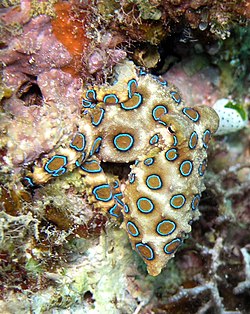| Octopodidae Temporal range: | |
|---|---|
 | |
| Greater blue-ringed octopus (Hapalochlaena lunulata) | |
 | |
| Octopus vulgaris | |
| Scientific classification | |
| Kingdom: | Animalia |
| Phylum: | Mollusca |
| Class: | Cephalopoda |
| Order: | Octopoda |
| Superfamily: | Octopodoidea |
| Family: | Octopodidae Orbigny, 1839 |
| Genera | |
See text | |
The Octopodidae comprise the family containing the majority of known octopus species (about 175 species).